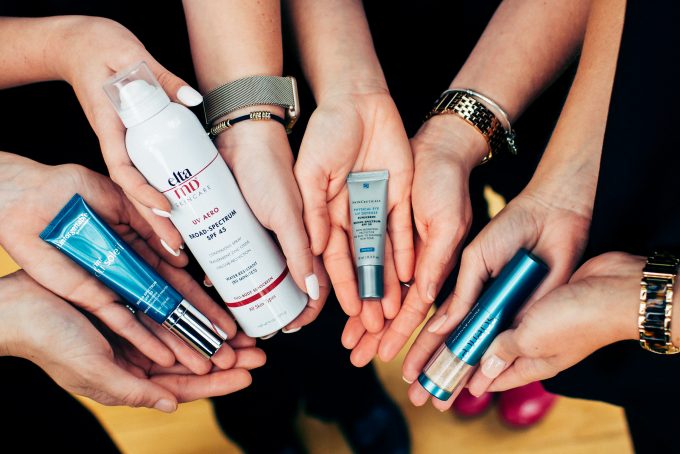10 Facts You Need to Know about Sunscreen

We’ve been told our whole lives that sunscreen is the most important thing we can use to prevent skin cancer. With summer fast approaching, it’s time to finally pull the veil back and tell the truth about what works, what doesn’t and what is just plain dangerous.
More than 5 million people are diagnosed with different skin cancers every year, many of whom have used sunscreen to protect themselves. Unfortunately for them and the rest of us, the many misconceptions about sunscreen are a systemic problem, propagated by misinformation, disingenuous marketing tactics and the pursuit of the almighty dollar.
At Seiler Skin, we believe that education and awareness are the solutions to this very real problem. By arming yourself with some key information, you can make an informed decision about how to best protect yourself from the harmful UVA and UVB that do nothing but damage to your skin.
Considering this, here are 10 important facts you need to know about sunscreen:
- A higher SPF does not mean it is better: This is perhaps the most common misconception. Sunscreen with SPF 30 blocks 97 percent of the sun’s UVB rays, and the improvement in protection by increasing SPF—even jumping from SPF 30 to 50—is 1 percent, a negligible increase at the cost of significantly higher chemical concentrations absorbing into your skin.
- Just because you don’t burn doesn’t mean you’re safe from the sun: Wrong, wrong, wrong. The SPF number on sunscreen relates to how much UVB light is blocked from penetrating your skin—not UVA light. DNA damage (what causes skin cancer) happens when DNA directly absorbs a UVA photon, disrupting normal base pairing sequences and altering its overall structure. Most common over-the-counter (OTC) sunscreens only block UVB light, which may keep you from burning but not from absorbing the dangerous cancer-causing UVA light.
- Zinc is the most important ingredient: Zinc is the key—and only—ingredient in sunscreen that will block the sun’s harmful UVA light from being absorbed and causing irrevocable damage to your DNA. When purchasing any sunscreen, always think Zinc.
- Reapplication is the most important action: If you have a day in the sun planned, only applying sunscreen before you head out will leave your skin exposed in short order. No matter the brand or quality of sunscreen you use, it will only last about an hour and half. After that, you’ll either shed it completely or metabolize it. Make a concerted effort to reapply consistently and evenly on your skin to stay safe throughout the day.
- Shade does not equal safety: You may think sitting under an umbrella by the pool or a wearing a big hat on the boat will protect you, but you’d be wrong again. In fact, you can get just as much UVA and UVB light exposure from rays reflecting off the water, sand, concrete, fiberglass and other common outdoor surfaces. Additionally, these rays can penetrate clothing. It’s vital to keep sunscreen on to protect from indirect exposure when enjoying the outdoors.
- Already being tan doesn’t mean you’re exempt: Many people believe that if they’re tan and don’t burn as easily, applying sunscreen daily is no longer important. The reality is this—tanning is the result of visible light and UVB damage. While you may not visibly burn when tan, UVA light readily and easily penetrates tanned skin and will do significant damage at the molecular level. Remember—you can get color when using sunscreen, but it should be done slowly over time while maintaining best practices for reapplication.
- The most popular sunscreens can actually be the worst: Sorry Neutrogena lovers, but you’ve been sold a bill of goods. Aside from being thick and nasty, Neutrogena is officially “among the worst brands for sun protection,” according to the Environmental Working Group. Many other common brands are listed among the worst because they lack key ingredients, like Zinc, that truly protect you from harmful UVA and UVB light.
- There is a big difference between physical and chemical sunscreen: Physical sunscreen contains Zinc and contains micronized, pure mineral crystals that work to reflect and refract UVA and UVB light. It sits unabsorbed on the skin, and acts as a strong barrier between you and the sun. Chemical sunscreen works through absorption and prevents mainly UVB light from penetrating deep enough to do serious damage. Unfortunately, many of these chemicals are dangerous and can cause other health and skin issues over time.
- The FDA does not regulate OTC sunscreens: Yes, you heard that right. OTC sunscreens are widely unregulated, which translates to no consumer protection standards or ingredient oversight, and inauthentic marketing gimmicks designed to sell you a product—not truly protecting you from danger.
- Medical-grade sunscreen may save your life one day: Many people claim that they don’t use sunscreen because they just don’t like it – it’s thick, odorous, greasy and gross. There is a simple reason for this—most OTC sunscreen ARE all of the above. Thankfully, there are a number of affordable medical-grade sunscreens available from your physician that are made with extremely high-quality ingredients (including Zinc) and utilize an effective, enjoyable delivery vehicle. Finding a sunscreen that you like using and that can be incorporated into your daily regimen is paramount—and just may save you from being another statistic one day.
If you are interested in learning more or would like to purchase a medical-grade sunscreen, please call our office today at 205.870.0204!